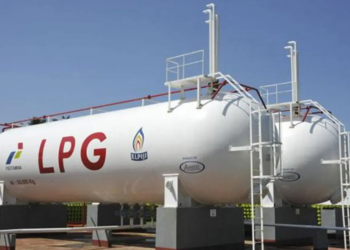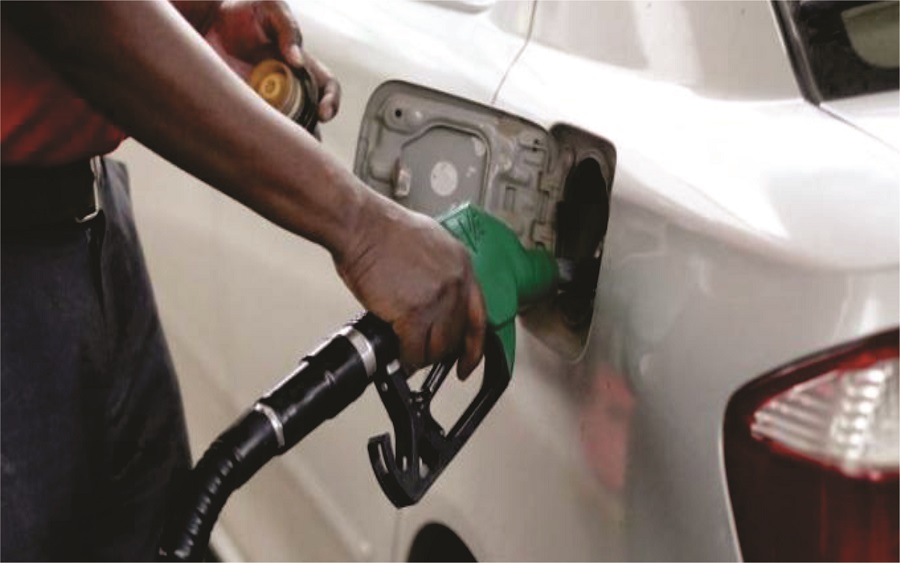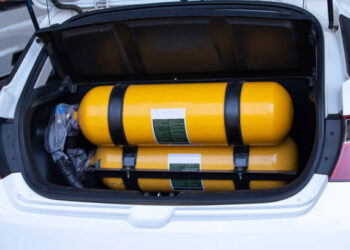- Felix Ekundayo, president of the Nigeria Liquefied Petroleum Gas Association (NLPGA), assures the safety of using gas for generators and highlights the similarity of LPG to other commonly used fuels. LPG is considered a cleaner alternative to petrol for powering generators.
- Despite concerns about the safety of using LPG for generators, Ekundayo affirms its safety and attributes the low adoption rate in Nigeria to the cheaper cost of subsidized petrol. However, with the removal of subsidies, Nigerians can now consider the switch to using gas for generators.
- Ekundayo encourages Nigerians to embrace the use of gas for generators as a safe and practical option, promoting more efficient and cleaner power generation.
The president of the Nigeria Liquefied Petroleum Gas Association, NLPGA, Felix Ekundayo, has emphasized the safety of using gas for generators.
In a conversation with Nairametrics, he explained that LPG (liquefied petroleum gas), commonly known as cooking gas, is similar to other fuels we use regularly. As experts suggest LPG as an alternative to petrol for powering generators, Ekundayo highlighted that LPG is a cleaner fuel compared to petrol, which is a fossil fuel.
Despite the benefits, concerns have been raised by some users regarding the safety of using LPG to power generators, regardless of their size. To address these concerns, Nairametrics sought input from Mr. Ekundayo regarding the implications of using gas for generators.
He emphasized the safety of the practice and encouraged Nigerians to consider it. In the past, Nigeria relied heavily on subsidized petrol due to its cost-effectiveness, resulting in limited adoption of using LPG (liquefied petroleum gas). However, with the recent removal of subsidies, it is now viable for Nigerians to explore the option of switching to gas-powered generators.
Expanding on the subject, Ekundayo highlighted that using gas for generators is a safe and viable option, encouraging Nigerians to explore this alternative for more efficient and cleaner power generation.
Perceived risks
Mr. Ekundayo addressed the perceived risk associated with using LPG for generators, emphasizing that it is more of a human handling issue rather than a problem with the fuel itself. He stated that LPG, when handled properly, is as safe to use as petrol.
In his explanation, he compared the handling of LPG for generators to its use in homes for cooking and kitchen tasks, highlighting that there is no difference. As more people are already using LPG for cooking, the transition to using it for generators poses no issue.
Furthermore, Mr. Ekundayo discussed the process of switching between petrol and gas in generators. He mentioned that the change in the generator carburetor can facilitate this switch. Some individuals may choose to retain the carburetor and add a converter, enabling the generator to run on both fuels. Others may opt to use gas directly.
He stressed the importance of making alterations to generators in a safe and approved manner. Qualified technicians should be sought to perform these conversions, rather than relying on just anyone.
Overall, Mr. Ekundayo reassured us that using LPG for generators can be a safe and viable choice. Proper handling and seeking professional expertise are crucial for a smooth transition and safe operation
The compressed natural gas context
According to industry experts, using compressed natural gas (CNG) as an alternative to LPG has been suggested due to its lighter nature, potentially offering enhanced safety. However, Mr. Ekundayo expressed his view to Nairametrics, stating that using CNG for home and small portable generators is not practical.
While it may work, the distribution mechanism for CNG is not feasible in this context. He emphasized that each variant of natural gas has its specific applications and purposes.
In expanding on this point, it can be understood that while CNG may have advantages in terms of being lighter and potentially safer, its distribution infrastructure and requirements may not be suitable for home and small portable generators. LPG, on the other hand, is widely available and has an established distribution network, making it a more practical choice for such applications.
The statement by Mr. Ekundayo indicates that different forms of natural gas, including CNG and LPG, have specific uses depending on the intended purpose and the existing infrastructure to support their distribution.
Preventing gas leaks
Mr. Ekundayo highlighted that the prevention of gas leaks can be achieved by ensuring the use of appropriate accessories. These accessories encompass regulators, hoses (which should undergo regular checks and replacement every 2-3 years), valves, cylinders, and clips used to secure the gas until it is ready to be ignited.
In emphasizing the importance of safety, Mr. Ekundayo states that the same level of safety measures employed for cooking with gas at home should also be maintained for using gas in generators and other appliances. Furthermore, he points out that gas-fired appliances, such as those used for washing machines and dryers in laundry services, follow similar safety practices.
The statement made by Mr. Ekundayo underlines the need for proper equipment and adherence to safety protocols to prevent gas leaks and ensure the safe use of gas in various applications. It emphasizes the parallels between safety practices in cooking and other gas-powered activities.
According to Mr. Ekundayo, gas cylinders/canisters should be changed every 15 years but recertified every five years.























Can I use horse of 15 yards ( that is the distance between the generator and gas cylinder). Thank you.
We just love theories. Tell us the practical aspect of this, how is the conversion done, how much is the conversion kit etc.
you want him to give you free of charge? “Go to court”
Lol 😂🤣.
Already there are conversion kits in the market. The price ranges from 15k to 25k depending on the size of your generator (kva). 2-3kva or 3.5- 10kva.
If you are interested contact me.
Thanks for your comments. I read the long repetative article. No specifics or pictures just talk.. As we used to say when we were at work. ‘No action talk only’— NATO!
Conversion kit should be rolled out again this is not now
He’s not lying. I’ve been using gas as fuel for my generator for about 7yrs till date and it’s safe, economical, and doesn’t require much maintenance as the petrol run generators
Permit me to know the consumption rate of LNG in a generator of about 2.5Kva as compared to PMS. I wish to know if it is more economical using LNG than PMS.